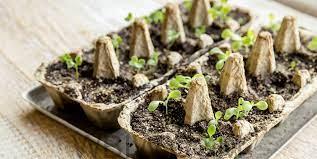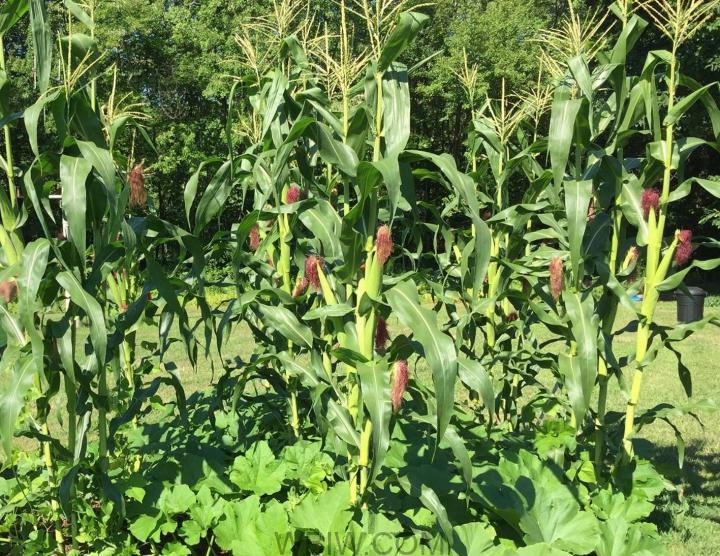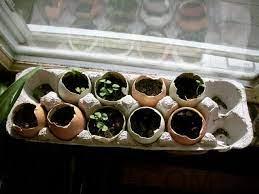
INDIANA – With seed catalogs arriving in the mail, it’s the perfect time to start thinking about what to plant in 2022. The same questions always come to mind when flipping through the pages. How much space do I need? What are some good companion plants? When should I start my seeds?
What Is Companion Planting?
Companion planting is the practice of growing different crops in close proximity for a better harvest—often because some plants have complimentary characteristics and “help” each other out in terms of pest control, soil nutrition, pollination, beneficial insects, use of space, etc.

A familiar example of companion planting is the Three Sisters trio – maize, climbing beans, and winter squash – which were commonly planted together by various Native American communities due to the plants’ complementary natures: the tall corn supports climbing beans, the low-growing squash shades the ground to prevent moisture loss and its big, prickly leaves discourage weeds and pests; and the fast-growing beans are ‘nitrogen fixers’ which make nitrogen available to other plants.
There are plenty of good reasons to plant certain crops together:
- Deterring pests: Certain plants act as insect repellents or deter critters. For example, garlic’s smell is unappealing to many pests.
- Attracting beneficials: Some plants also attract beneficial insects. For example, borage attracting pollinating bees and tiny pest-eating wasps.
- Shade regulation: Large plants provide shade for smaller plants in need of sun protection. For example, corn shades lettuce.
- Natural supports: Tall plants, like corn and sunflowers, can support lower-growing, sprawling crops such as cucumbers and peas.
- Improved plant health: When one plant absorbs certain substances from the soil, it may change the soil biochemistry in favor of nearby plants.
- Improving soil fertility: Some crops, like beans, peas, and other legumes, help to make nitrogen more available in the soil. Similarly, plants with long taproots, like burdock, bring up nutrients from deep in the soil, enriching the topsoil to the benefit of shallow-rooted plants.
- Weed suppression: Planting sprawling crops like potatoes with tall, upright plants minimizes open areas, where weeds typically take hold.
When should I plant seeds in southern Indiana?
Proper timing is crucial if you want the transplant to be the right size at planting time. Seeds of tomatoes, peppers, and eggplant should be started about seven weeks before your outdoor planting date. Pumpkins, melons, and squash should be started about four weeks before planting outdoors.

In Indiana, our last frost is usually in late April, so the spring growing season can start in May.
Seed starting times are calculated by taking the date of the last frost and subtracting the days until transplant.
Below is a list of recommended planting dates from the Old Farmers Almanac.
| Crop |  Based on Frost Dates Based on Frost Dates Based on Moon Dates Based on Moon Dates | ||
|---|---|---|---|
| Start Seeds Indoors | Plant Seedlings or Transplants | Start Seeds Outdoors | |
| Arugula | N/A | N/A |  Apr 11-25 Apr 11-25 Apr 11-16 Apr 11-16 |
| Basil |  Feb 27-Mar 14 Feb 27-Mar 14 Mar 2-14 Mar 2-14 |  Apr 25-May 16 Apr 25-May 16 Apr 30-May 15 Apr 30-May 15 | N/A |
| Beets | N/A | N/A |  Apr 11-May 2 Apr 11-May 2 Apr 17-29 Apr 17-29 |
| Bell Peppers |  Feb 13-27 Feb 13-27 Feb 13-16 Feb 13-16 |  May 2-16 May 2-16 May 2-15 May 2-15 | N/A |
| Broccoli |  Feb 27-Mar 14 Feb 27-Mar 14 Mar 2-14 Mar 2-14 |  Mar 28-Apr 18 Mar 28-Apr 18 Apr 1-16 Apr 1-16 | N/A |
| Cabbage |  Feb 27-Mar 14 Feb 27-Mar 14 Mar 2-14 Mar 2-14 |  Mar 28-Apr 11 Mar 28-Apr 11 Apr 1-11 Apr 1-11 | N/A |
| Cantaloupes |  Mar 28-Apr 4 Mar 28-Apr 4 Apr 1- 4 Apr 1- 4 |  May 9-23 May 9-23 May 9-15 May 9-15 | N/A |
| Green Beans | N/A | N/A |  May 2-23 May 2-23 May 2-15 May 2-15 |
|---|
| Lettuce |  Mar 14-28 Mar 14-28 Mar 14-18 Mar 14-18 |  Apr 11-May 9 Apr 11-May 9 Apr 11-16, Apr 30-May 9 Apr 11-16, Apr 30-May 9 | N/A |
|---|---|---|---|
| Okra | N/A | N/A |  May 9-23 May 9-23 May 9-15 May 9-15 |
| Onions | N/A | N/A |  Mar 28-Apr 18 Mar 28-Apr 18 Mar 28-31, Apr 17-18 Mar 28-31, Apr 17-18 |
| Peas | N/A | N/A |  Mar 14-Apr 4 Mar 14-Apr 4 Mar 14-18, Apr 1- 4 Mar 14-18, Apr 1- 4 |
|---|---|---|---|
| Potatoes | N/A | N/A |  Apr 18-May 9 Apr 18-May 9 Apr 18-29 Apr 18-29 |
| Pumpkins |  Apr 4-18 Apr 4-18 Apr 4-16 Apr 4-16 |  May 9-23 May 9-23 May 9-15 May 9-15 | N/A |
| Radishes | N/A | N/A |  Feb 27-Mar 21 Feb 27-Mar 21 Feb 27-Mar 1, Mar 19-21 Feb 27-Mar 1, Mar 19-21 |
| Spinach | N/A | N/A |  Mar 14-Apr 4 Mar 14-Apr 4 Mar 14-18, Apr 1- 4 Mar 14-18, Apr 1- 4 |
|---|---|---|---|
| Sweet Potatoes |  Mar 28-Apr 4 Mar 28-Apr 4 Mar 28-31 Mar 28-31 |  May 9-23 May 9-23 May 16-23 May 16-23 | N/A |
| Tomatoes |  Feb 27-Mar 14 Feb 27-Mar 14 Mar 2-14 Mar 2-14 |  May 2-23 May 2-23 May 2-15 May 2-15 | N/A |
|---|---|---|---|
| Turnips | N/A | N/A |  Mar 28-Apr 18 Mar 28-Apr 18 Mar 28-31, Apr 17-18 Mar 28-31, Apr 17-18 |
| Watermelons |  Mar 28-Apr 4 Mar 28-Apr 4 Apr 1- 4 Apr 1- 4 |  May 9-23 May 9-23 May 9-15 May 9-15 | N/A |
| Zucchini |  Mar 28-Apr 11 Mar 28-Apr 11 Apr 1-11 Apr 1-11 |  May 9-23 May 9-23 May 9-15 May 9-15 | N/A |



